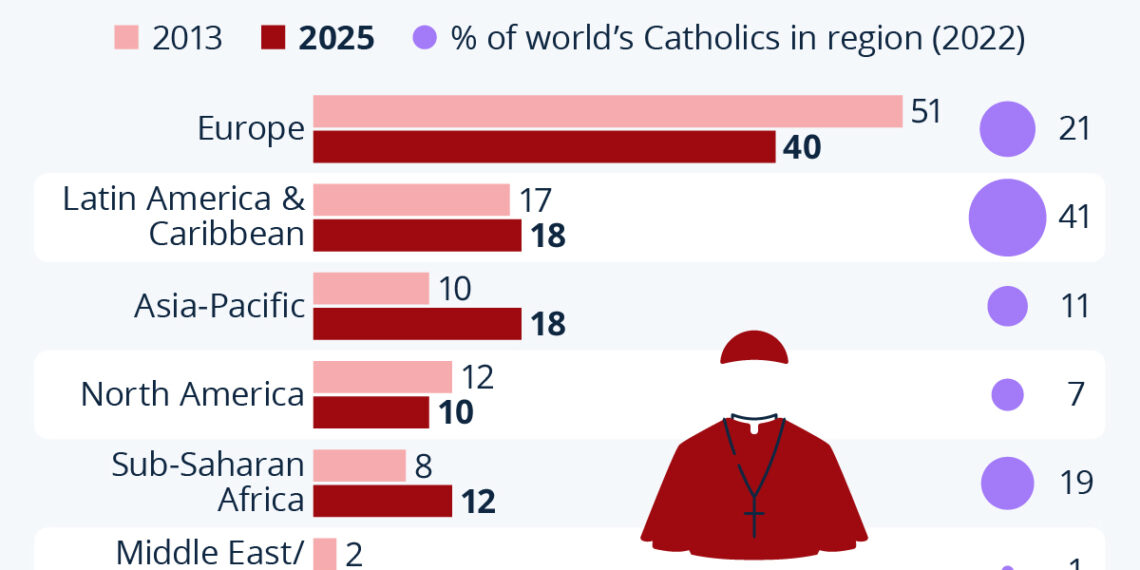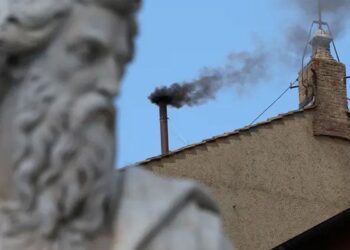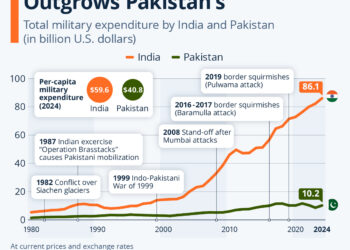The Declining Share of European Cardinals Ahead of the Next Papal Vote
With the recent passing of Pope Francis, the landscape of the Catholic Church is preparing for another pivotal moment: the election of a new pope. One of the significant shifts observed in this transition is the noticeable decline in the share of European cardinals eligible to vote, a factor that could have profound implications for the future leadership of the Church.
Shifting Demographics of Cardinals
Over the years, the composition of cardinals has been a reflection of the changing demographic trends within the global Catholic community. As the data from Pew Research Center indicates, prior to the papal conclave that elected Pope Francis, European cardinals comprised 50 percent of the voting body. Fast forward to the current situation, and this number has dropped to 41 percent. This shift illustrates a deliberate and notable move away from a predominantly European representation in the Church’s leadership.
The Global Context of Cardinal Appointments
The pope has a significant role in determining the makeup of the College of Cardinals, the body that elects the pope. Under Pope Francis, there has been a conscious effort to appoint cardinals from regions that have traditionally been underrepresented:
-
Asia-Pacific Region: The percentage of cardinals from this area increased from 10 percent to 18 percent. This marked growth reflects not only the increasing Catholic population in countries like the Philippines and South Korea but also the pope’s intention to globalize the Church’s leadership.
- Sub-Saharan Africa: The share of cardinals here has also experienced growth, moving from 8 percent to 12 percent. This change highlights the burgeoning Catholic community in Africa, which is one of the fastest-growing regions for Catholicism globally.
The Underrepresentation of Latin America and the Caribbean
While there have been notable increases in the number of cardinals from both the Asia-Pacific and Sub-Saharan Africa, Latin America and the Caribbean remain significantly underrepresented when compared to their proportion of the global Catholic population. With 41 percent of Catholics worldwide residing in this region, the representation of cardinals only increased slightly from 17 percent to 18 percent during Pope Francis’s tenure.
The Implications for the Next Pope Election
The upcoming papal conclave that will elect the successor to Pope Francis is likely to be influenced by these demographic changes. The reality of having fewer European cardinals could shift the political landscape within the voting body. Cardinals’ backgrounds, cultures, and regional concerns will inevitably come into play when choosing the next pope.
As the influence of the Catholic Church diversifies, the priorities of the cardinals may also reflect a broader global perspective. Issues such as social justice, environmental stewardship, and the church’s engagement with contemporary societal challenges are increasingly pressing matters that cardinals from varying backgrounds are likely to address in their voting.
Conclusion
The evolving landscape of the College of Cardinals invites us to reflect on the future direction of the Catholic Church. The declining representation of European cardinals, alongside the increased visibility of leaders from Africa and Asia, suggests a more globalized approach to Catholicism in the years to come. The reverberations of this transition will be felt not just in ecclesiastical circles but in the lived experiences of Catholics around the world.






